Will and Kate's Canada tour highlights First Nations fury
- Published
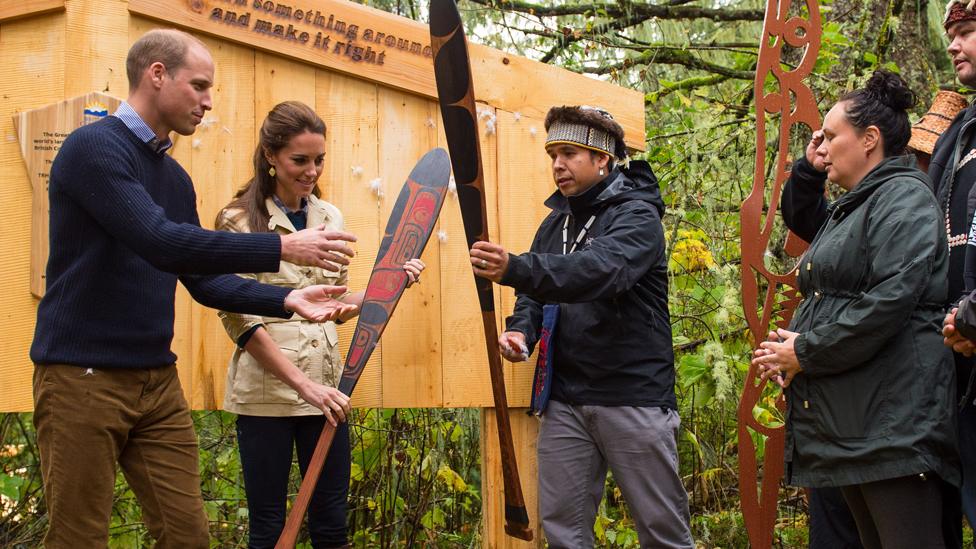
The Duke and Duchess of Cambridge are presented with canoe paddles as a gift from the Heiltsuk First Nation
Canadian First Nations have a long and deep connection with the British monarchy, dating back more than 250 years.
Now, with the relationship between aboriginals and the federal Liberal government showing signs of strain, some First Nations leaders are leveraging that historic relationship - and the visit by the Duke and Duchess of Cambridge to Canada - to shine a spotlight on their frustrations.
Among them is Grand Chief Stewart Phillip, who pulled out at the 11th hour from a ceremony involving the royal couple meant to symbolise reconciliation between indigenous and non-indigenous people.
In pictures: William and Kate in Canada
Mr Phillip, with the Union of British Columbia Indian Chiefs, which represents 115 of the provinces' 203 First Nations, told the BBC he "didn't feel entirely comfortable with the invitation given the reality on the ground".
"I've witnessed countless grandiose, well-intentioned ceremonies that at the end of the day represented nothing more, nothing less than a photo-op that would suggest there was peace, harmony, and prosperity between First Nations peoples and the Crown."
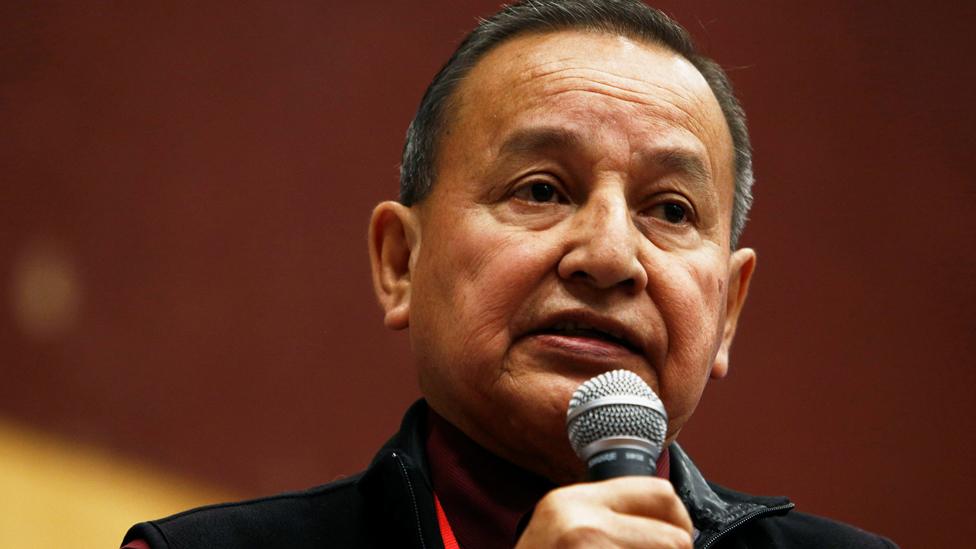
Grand Chief Stewart Phillip told the BBC he wanted to avoid meetings that would only be photo ops.
He pointed to statistics showing that half of First Nations children live in poverty.
Grand Chief Phillip also expressed frustration that the government has failed to quickly rectify funding disparities for the delivery of on-reserve child welfare services, despite a scathing ruling by a human rights tribunal.
He noted concern, too, at the high suicide rates in First Nations and Inuit communities.
Grand Chief Edward John, with the First Nations Summit, an organisation that represents treaty interests, did attend the Black Rod ceremony on Monday.
The Duke and Duchess of Cambridge were greeted by crowds in Vancouver
There, Prince William added a ring representing indigenous peoples and their connection to BC and the Crown to a ceremonial staff crafted by an indigenous artist for the Queen's Diamond Jubilee.
Grand Chief John decided to use the platform to express concerns he shared with Grand Chief Phillip, including the impact of often brutal past assimilationist policies on the current generation.
"I have two minutes to speak to 150 years of why we need reconciliation," he said. "I will take that time."
Prime Minister Justin Trudeau came to power last October on a promise to usher in a new and respectful relationship with Canada's First Nations, Inuit and Metis communities.
He launched an inquiry looking into why more than 1,000 indigenous women have been murdered or gone missing since the 1980s. He also committed billions of dollars in new funds.
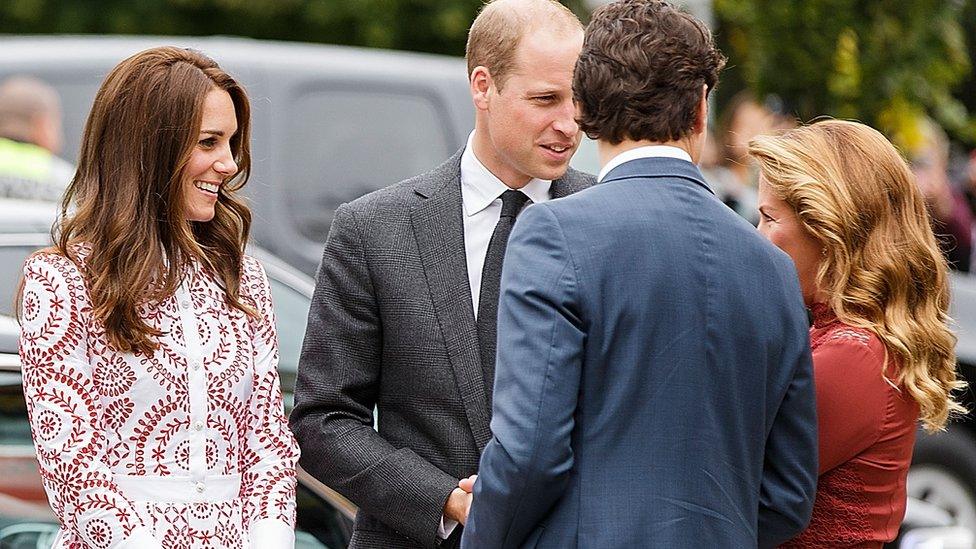
Nearly a year later, there's a sense of frustration that those commitments are unravelling, from a failure to see progress on social issues to a growing anger over hints the government will push ahead with controversial BC energy projects that are opposed by a number of First Nations.
First Nations are not unified in their opposition to oil and gas extraction and infrastructure. Some also rely on the economic boost offered by the energy sector.
The tour, packed with 30 engagements, offers the Cambridges many chances to witness the impact of the fractured relationship with aboriginal people.
William and Kate visited the Great Bear Rainforest, in British Columbia
Their visit included a trip to Sheway, a programme assisting pregnant women struggling with addiction, many of whom are indigenous.
The royals also toured the Great Bear Rainforest, where indigenous community leaders gave statements on the need to protect the region's environment.
The couple are in Canada with their children Prince George, three, and Princess Charlotte, 16 months, for an eight-day tour of the province of British Columbia and the Yukon.
Like the Cambridges, the Queen and other members of the royal family regularly meet with First Nations on their Canadian visits.
The enduring and close relationship dates back to the Royal Proclamation of 1763, issued by King George III in the wake of the Seven Years' War, which protected aboriginal land rights and cultural practices under then-British territory.
Many treaties were also concluded with the British Crown before Canada received legislative independence in 1931.
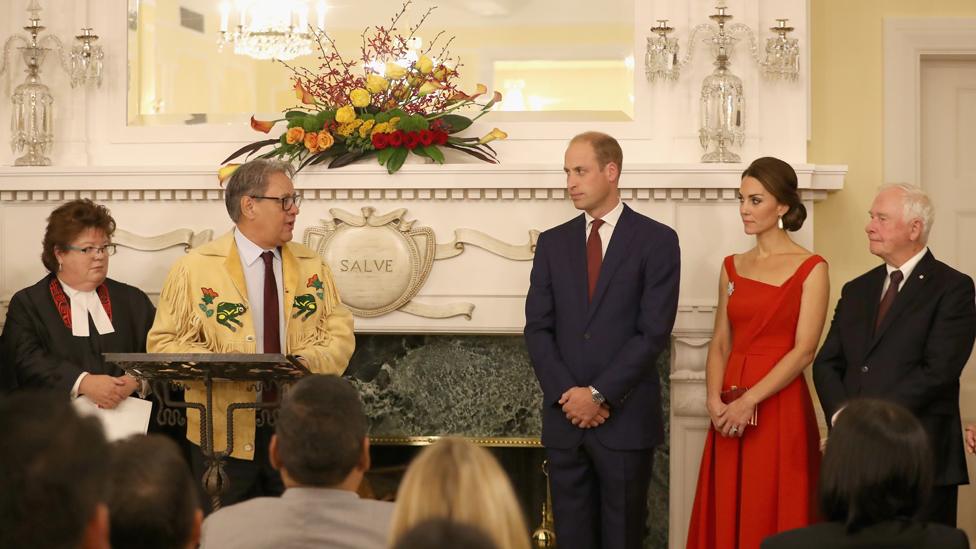
That long history has forged a unique bond between the monarchy and First Nations, of which there are over 600 across Canada. Indigenous Canadians make up some 4.3% of the population.
Nathan Tidridge, who has written extensively on the monarchy, said royal tours are heavy in pomp and circumstance, but allow for that relationship to be privately re-enforced.
"Concrete things will happen largely behind the scenes between the royal couple and indigenous peoples. It will be those conversations, pledges, gifts - petitions if there are any that are presented," he said.
"Those have huge, huge value. But a lot of that will happen away from the cameras."
For Grand Chief John and others, those meetings offered a chance to express growing impatience for political action.
"People say it's remarkable how patient we are," he said.
"But you see the frustration - and the seething fury - that lies underneath our people across our province."
- Published27 September 2016
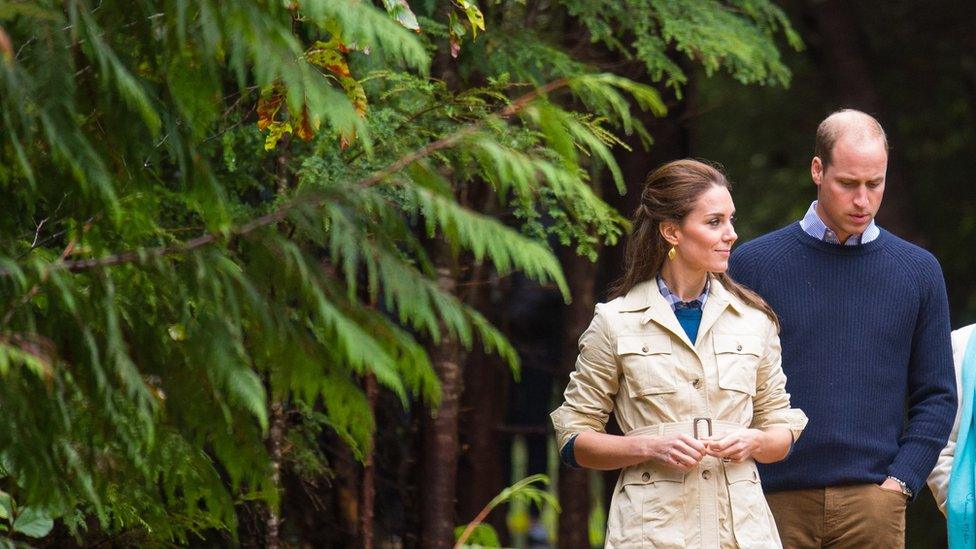
- Published2 October 2016
- Published24 September 2016
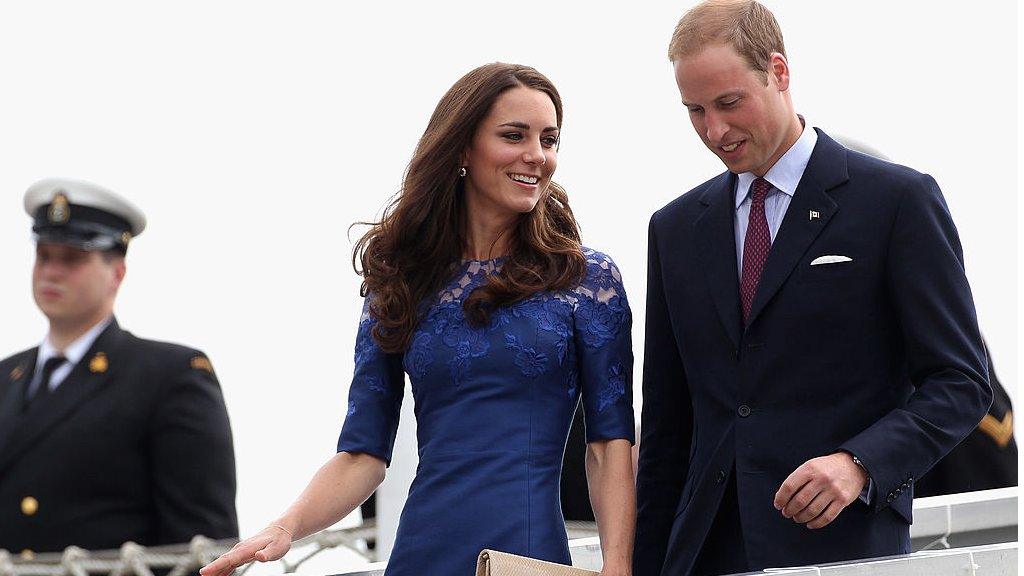
- Published27 September 2016
